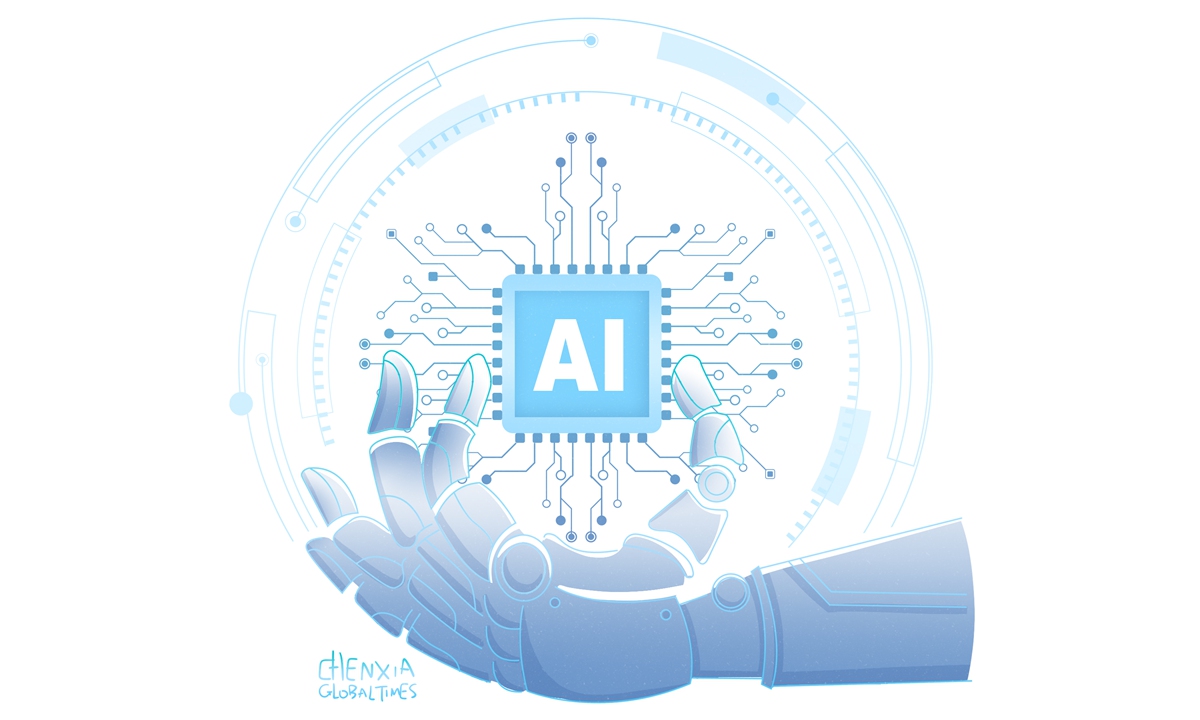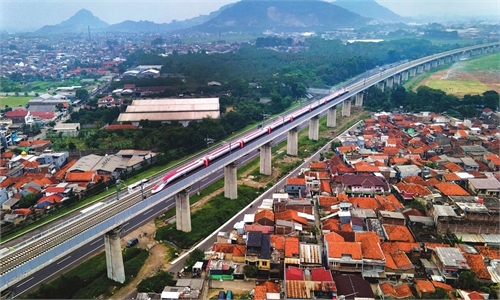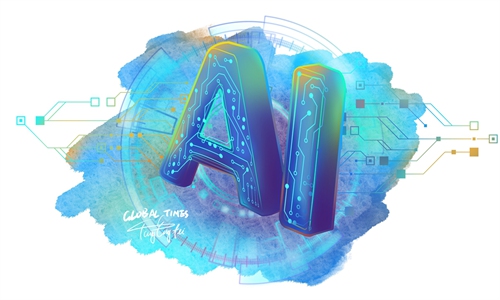
Illustration: Chen Xia/GT
As the inauguration of the new US government approaches, some American media outlets have reported that the Biden administration's executive order regarding artificial intelligence (AI) regulations may be repealed. This potential move aims to expedite AI research and development in Silicon Valley, with the goal of ensuring that the US retains its competitive edge over China in the AI sector. It is believed that over the next four years, AI will emerge as a top priority for both the US and China.Recently, the US-China Economic and Security Review Commission (USCC) proposed a Manhattan Project-style initiative to advance the development of artificial general intelligence (AGI), according to Reuters. The Manhattan Project was a large-scale collaboration between the US government and the private sector during World War II that produced the first atomic bombs, according to the report.
The Manhattan Project-style AI initiative proposed by the USCC aims to leverage past American successes to accelerate the development of AGI, overcome existing technological barriers, and achieve breakthrough progress.
The Manhattan Project-style AI initiative has several key objectives. First, it aims to maintain the US' technological dominance on the global stage. AGI holds vast potential across various applications, from automated production to intelligent decision support, significantly boosting national competitiveness. To solidify its leadership position across the global AI landscape, the US aims to accelerate AGI research and development by pooling resources and promoting interdisciplinary collaboration. This initiative will drive breakthroughs in fields such as computer science, neuroscience, and engineering.
Second, the proposal for the Manhattan Project-style AI initiative carries significant economic and industrial implications. Progress in AI technology is poised to unlock new opportunities for economic expansion by enhancing production efficiency and generating innovative services.
By advancing the development of AGI, the US aims to secure a leading position in economic development over the coming decades, yielding substantial benefits for the nation. AGI technology will catalyze the growth of related industrial sectors, including cloud computing, big data, and the Internet of Things, thereby driving comprehensive industrial upgrades.
To achieve these objectives, Washington is expected to shift its focus and develop corresponding policies in the future. In terms of government investment and financial support, a significant increase in funding for both fundamental and applied AI research is likely. This could involve the establishment of dedicated funds that encompass various areas, including basic research, applied research, industrialization, and talent development.
In the context of international cooperation and competition, the US is actively positioning itself in the global AI race, striving to secure its leadership in AI technology. At the same time, it is formulating strategies to address competitors and safeguard its competitive edge in this critical field.
The prospects of the Manhattan Project-style AI initiative remain unclear, but it offers valuable insights.
First, technological innovation is increasingly recognized as a strategic priority. Through this initiative, the US has positioned AI technology as a cornerstone of national strategy, aiming to maintain its competitive edge in the global AI landscape. This serves as a call to action for other nations to prioritize technological innovation as a vital driver of national development.
Second, the significance of long-term strategic planning cannot be overstated. The advancement of high-tech sectors requires a visionary approach that transcends short-term interests. Effective long-term planning demands collaboration between government and the private sector, along with sustained investment of resources and effort.
Third, the importance of concentrating resources to address significant challenges is highlighted. A key factor in the success of the original Manhattan Project was the ability to mobilize the nation's - and even the world's - top scientists, engineers, and technological resources.
In a similar vein, the Manhattan Project-style AI initiative emphasizes the urgency of advancing AGI research and development through resource concentration. This indicates that, in the face of major technological challenges, the government needs to coordinate human, material, and financial resources to harness collective strengths and fully support significant projects aimed at achieving critical breakthroughs.
The author is an expert at the China Center for Information Industry Development (CCID). bizopinion@globaltimes.com.cn



